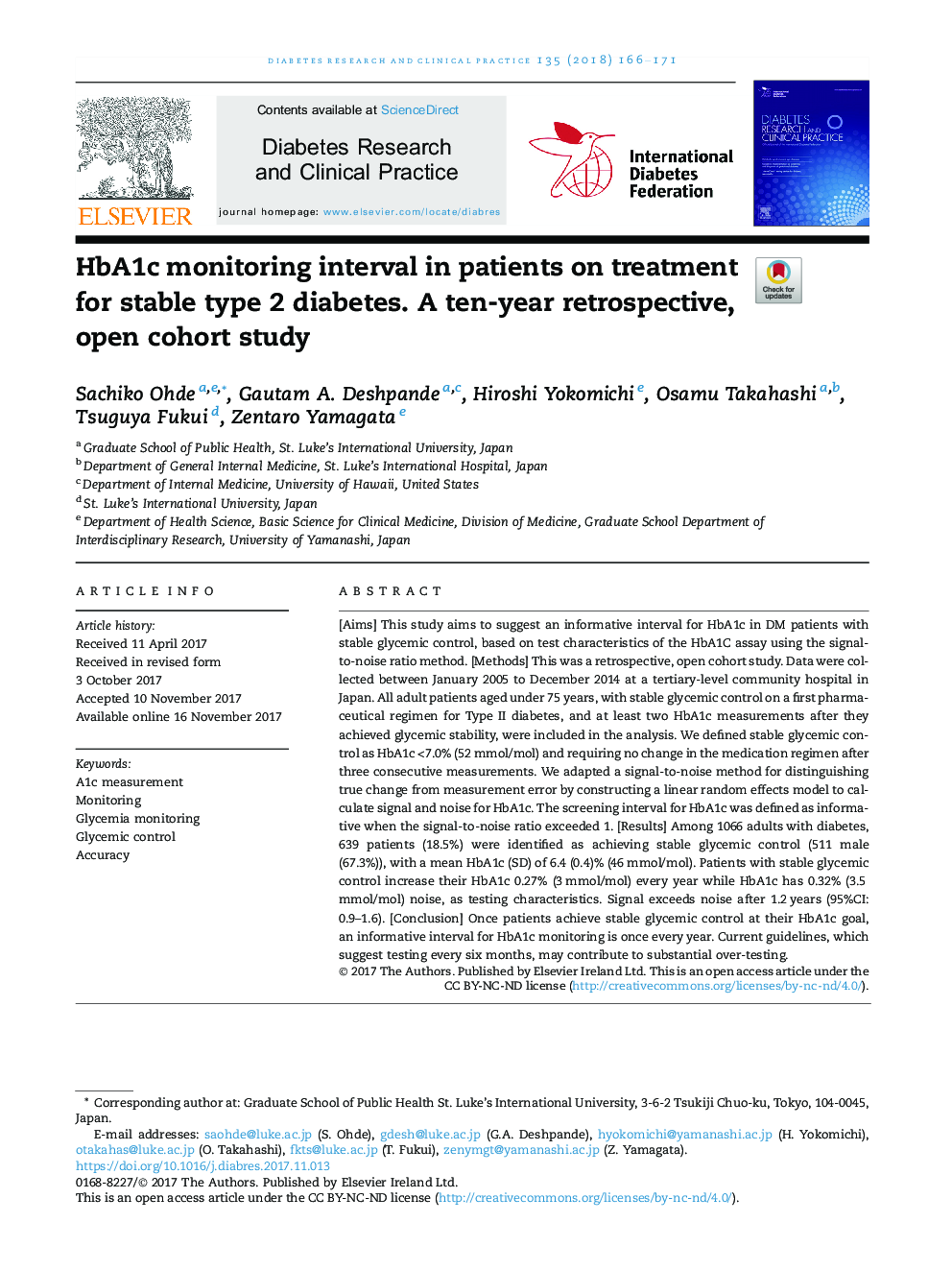| کد مقاله | کد نشریه | سال انتشار | مقاله انگلیسی | نسخه تمام متن |
|---|---|---|---|---|
| 8630366 | 1568780 | 2018 | 6 صفحه PDF | دانلود رایگان |
عنوان انگلیسی مقاله ISI
HbA1c monitoring interval in patients on treatment for stable type 2 diabetes. A ten-year retrospective, open cohort study
دانلود مقاله + سفارش ترجمه
دانلود مقاله ISI انگلیسی
رایگان برای ایرانیان
موضوعات مرتبط
علوم زیستی و بیوفناوری
بیوشیمی، ژنتیک و زیست شناسی مولکولی
علوم غدد
پیش نمایش صفحه اول مقاله

چکیده انگلیسی
[Aims] This study aims to suggest an informative interval for HbA1c in DM patients with stable glycemic control, based on test characteristics of the HbA1C assay using the signal-to-noise ratio method. [Methods] This was a retrospective, open cohort study. Data were collected between January 2005 to December 2014 at a tertiary-level community hospital in Japan. All adult patients aged under 75â¯years, with stable glycemic control on a first pharmaceutical regimen for Type II diabetes, and at least two HbA1c measurements after they achieved glycemic stability, were included in the analysis. We defined stable glycemic control as HbA1c <7.0% (52â¯mmol/mol) and requiring no change in the medication regimen after three consecutive measurements. We adapted a signal-to-noise method for distinguishing true change from measurement error by constructing a linear random effects model to calculate signal and noise for HbA1c. The screening interval for HbA1c was defined as informative when the signal-to-noise ratio exceeded 1. [Results] Among 1066 adults with diabetes, 639 patients (18.5%) were identified as achieving stable glycemic control (511 male (67.3%)), with a mean HbA1c (SD) of 6.4 (0.4)% (46â¯mmol/mol). Patients with stable glycemic control increase their HbA1c 0.27% (3â¯mmol/mol) every year while HbA1c has 0.32% (3.5â¯mmol/mol) noise, as testing characteristics. Signal exceeds noise after 1.2â¯years (95%CI: 0.9-1.6). [Conclusion] Once patients achieve stable glycemic control at their HbA1c goal, an informative interval for HbA1c monitoring is once every year. Current guidelines, which suggest testing every six months, may contribute to substantial over-testing.
ناشر
Database: Elsevier - ScienceDirect (ساینس دایرکت)
Journal: Diabetes Research and Clinical Practice - Volume 135, January 2018, Pages 166-171
Journal: Diabetes Research and Clinical Practice - Volume 135, January 2018, Pages 166-171
نویسندگان
Sachiko Ohde, Gautam A. Deshpande, Hiroshi Yokomichi, Osamu Takahashi, Tsuguya Fukui, Zentaro Yamagata,